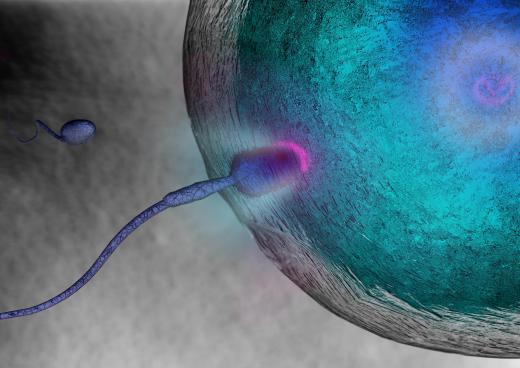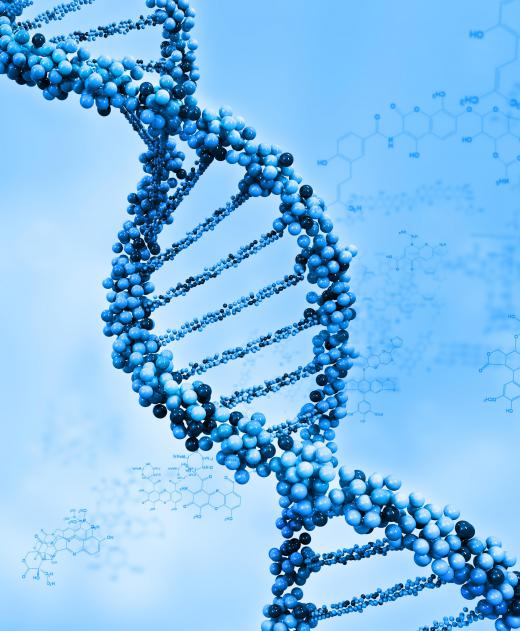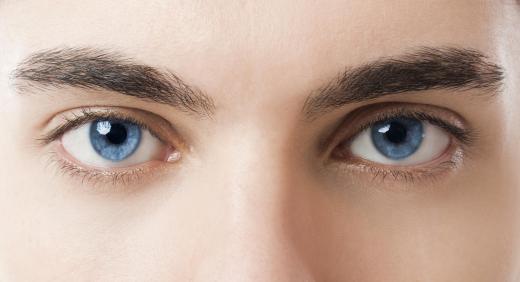What are Homologous Chromosomes?
In genetics, homologous chromosomes contain genes for the same characteristics of an organism. More specifically, each copy of the chromosome has the gene for the characteristic located in the same place, or loci. Homologous comes from the Greek where homo means like and logous means proportional or in proportion to.
Chromosomes are made up of protein and DNA, deoxyribonucleic acid, which carries instructions for the inheritance of characteristics within organisms. Almost all cells of an individual organism have the same amount and type of DNA. The DNA is found mostly in the nucleus in tightly coiled threads, which are the chromosomes. Depending on the cell type, different parts of the chromosomes are used to make different substances, which determine the cell’s function.

The instructions for an organism’s characteristics are actually located within the genes. Genes are sections of DNA, so many genes can be found along the lengths of DNA making up the chromosomes. All genes have more than one version, so when chromosomes are inherited from parent cells, the version of the gene, or allele, is not always the same. Although homologous chromosomes have the same genes, they do not have to have the same allele for each gene.

If each chromosome of the homologous chromosomes pair has the same allele for a particular gene, it is said to be homozygous. If the alleles are different, then the cell is referred to as heterozygous. The way in which the alleles interact determines the characteristics of the offspring. Alleles can be dominant or recessive and, if different alleles are present, the dominant allele will determine the characteristic of the offspring.

Within the somatic, non-reproductive, cells of each organism, there are two copies of each chromosome. Cells that have two copies of each chromosome are called diploid cells and those that have only a single copy are called haploid cells. Reproductive cells, or gametes, only have one copy of each chromosome, so they are haploid. This ensures that the cells that are formed through the fusion of two gamete cells have the correct number of chromosomes after fertilization.

For example, human somatic cells have 46 chromosomes within their nuclei, or 23 pairs of homologous chromosomes. One of each pair comes from the mother and one from the father. The human gamete cells, sperm and ova (eggs), each contain only 23 chromosomes. During fertilization, one sperm and one ovum fuse creating a cell that has the full complement of 46 chromosomes.
AS FEATURED ON:
AS FEATURED ON:














Discussion Comments
@MrsWinslow - You have the right idea. Homologous chromosomes under mitosis for regular old cell division, like when an embryo is growing--each new cell with have all the same chromosomes. But a gamete (egg or sperm) will have just half. That's why two people could have a pretty infinite number of different children, because there are so many different possible combinations of chromosomes.
Y definitely has no match and it's a very small chromosome that doesn't do much besides make a boy. In women, there are two X chromosomes, so I guess they would be homologous, while in a man, there's just one, so it has no match. That's why men are more likely to be colorblind. The gene for this is located on the X chromosome.
I'm trying to get a grip on all of this because my sister and her husband are at high risk for a genetic disorder if they have children and we just want to understand. With homologous chromosomes, after meiosis the sperm or egg cell could have either copy of the chromosome, right? So a baby would have one copy from its mom and one copy from its dad?
Do the X and Y chromosomes not have a homologous pair?
Post your comments